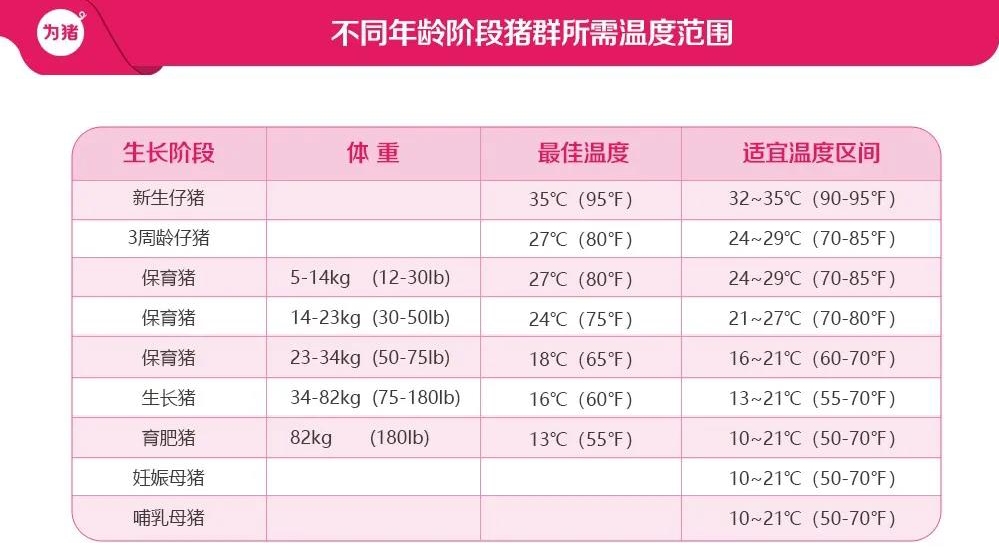Temperature control of the internal environment of the pig house
发布时间:2021-01-15
Temperature plays a leading role in various environmental factors. Pigs are very sensitive to the level of environmental temperature, mainly in the following aspects.
Piglets are afraid of cold, and low temperature is the most harmful to newborn piglets. If they are exposed to a 1°C environment for 2 hours, they can freeze, freeze, or even freeze to death. Eating or drinking, trembling all over, the emaciated pig freezes at -5°C. At the same time, cold is the main cause of diarrheal diseases such as yellowing, pullorum and infectious gastroenteritis in piglets, and it can also induce respiratory diseases. Experiments show that if nursery pigs live in an environment below 1°C, their weight gain is 4.3% slower than that of the control, and the feed reward is reduced by about 5%.
In the cold season, the house temperature for adult pigs should not be lower than 10°C, and the nursery house should be kept at 18°C. Piglets of 2 to 3 weeks old need about 26°C, while piglets within 1 week of age need an environment of 30°C. As for the temperature in the incubator, the temperature in the incubator is even higher. The temperature difference between day and night in spring and autumn can reach more than 10°C. It is easy to induce various diseases in pigs. Therefore, it is required to close and open doors and windows in a timely manner during this period to reduce the temperature difference between day and night.
Adult pigs have poor heat resistance. When the temperature is higher than 28°C, large pigs weighing more than 75kg may experience asthma. If it exceeds 30 °C, the feed intake of pigs will decrease significantly, the feed reward will decrease, and the growth rate will be slow. When the temperature is higher than 35°C and no heatstroke prevention and cooling measures are taken, individual fattening pigs may suffer from heatstroke, pregnant sows may cause abortion, boar libido decreases, and semen quality is poor, and it is difficult to recover within 2 to 3 months. The temperature in the pig house depends on the source and the degree of heat dissipation in the pig house. In the absence of heating equipment, the source of heat mainly depends on the heat emitted by the pig body and sunlight. The amount of heat lost is related to the structure, building materials, ventilation equipment and management of the pig house. Houses should be added with warming or insulation facilities. In the hot summer, heatstroke prevention and cooling work should be done for adult pigs. Such as increasing ventilation, giving showers, speeding up heat dissipation, and reducing the density of pigs to reduce the heat source in the house, which can effectively improve the production performance of finishing pigs, pregnant sows and breeding boars.


 QQ咨询
QQ咨询 拨打电话
拨打电话 在线留言
在线留言